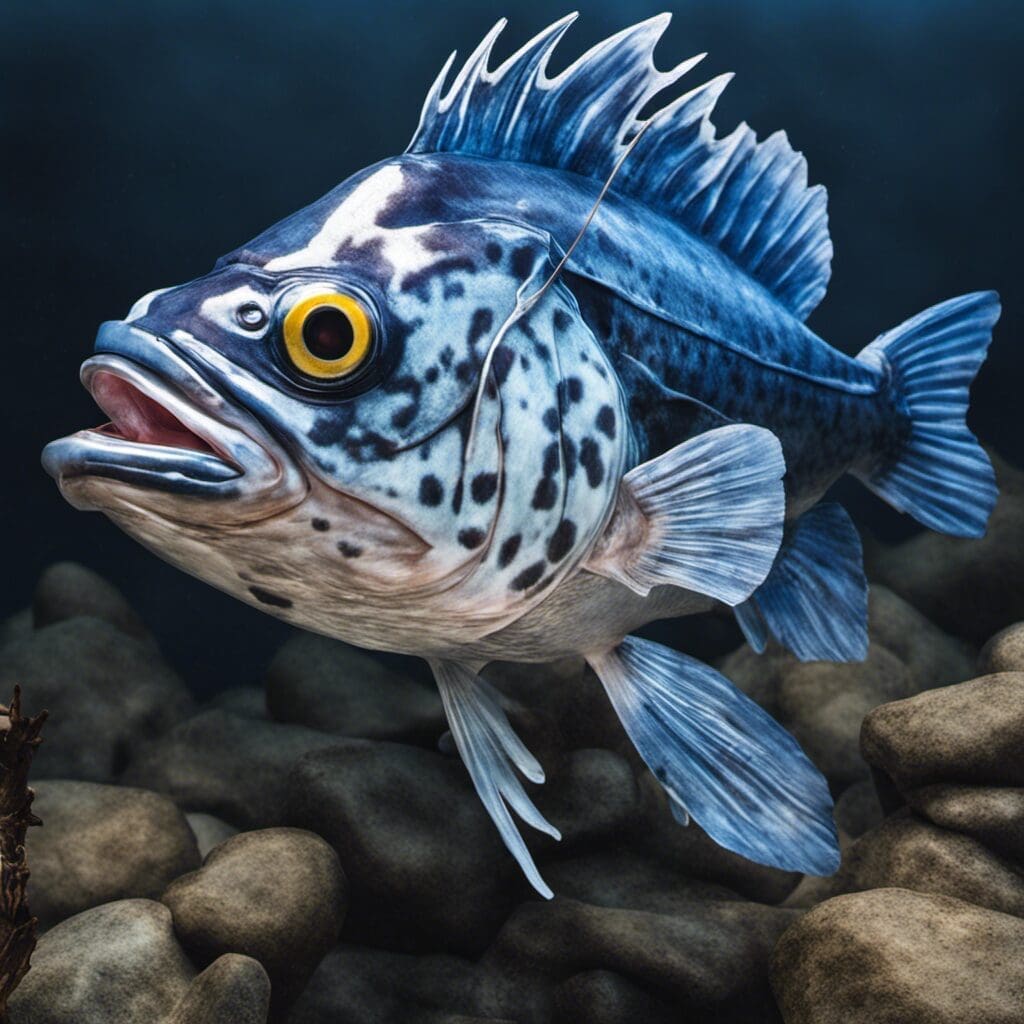Introduction
The Blue Rockfish, scientifically known as Sebastes mystinus, belongs to the Sebastes family of Rockfishes.
Conservation Status
The conservation status of Blue Rockfish varies among regions but is generally of least concern. Conservation efforts focus on habitat preservation and sustainable fishing practices.
Current Status
The Blue Rockfish is classified by the International Union for Conservation of Nature (IUCN) as “Least Concern”. The population is considered stable with no major threats.
Conservation Efforts
Conservation efforts are made by enforcing fishing regulations and maintaining marine protected areas to provide a safe habitat for breeding and growth.
Statistics
| Average Length | Range of Length | Average Weight | Range of Weight | Average Lifespan | Other Stats |
|---|---|---|---|---|---|
| 14 inches | 10-20 inches | 3 pounds | 1-5 pounds | 44 years | Dives up to 600 feet deep |
Distribution
Regions/Countries
Blue Rockfish are found in the Eastern Pacific from Alaska to Baja California.
Migration Patterns
There is minimal migration. Blue Rockfish typically stay on the same reef for their entire life.
Habitats
Blue Rockfish are commonly found in marine or saltwater environments. They prefer a depth range from near the surface down to 800 feet, and can adapt to a wide temperature range, evident from their widespread geographic distribution.
When and Where to See
Seasonal Patterns
While observable year-round, rockfish tend to come closer to the shore during summer months.
Time of Day
As most fish activities are tied with feeding, Blue Rockfish are often more active during the day.
Best Fishing Locations
Blue Rockfish can be found along the Pacific coasts of North America. Particular hotspots include:
- Monterey Bay, California
- Prince William Sound, Alaska
- Puget Sound, Washington
- Oregon Inlet, North Carolina
How to Catch
Live shrimp or artificial lures are commonly used to catch Blue Rockfish. Bottom fishing can be effective, as it reaches the depth where the fish typically inhabit. Late spring and summer are often the best seasons to catch Blue Rockfish, especially during clear, sunny days.
Identification Guide
Blue Rockfish are notably dark blue to black in color. They can be distinguished from other species by their mottled patterns and the lack of a deeply notched tail.
Culinary
The Blue Rockfish has a firm texture and a sweet taste, making it a great component for various recipes. Nutritionally, it is high in protein and low fat.
Additional Information
Behavior
Blue Rockfish feed on zooplankton and are usually lone hunters, but can also be found in small groups.
Predators and Threats
Natural predators include larger fish species and marine mammals. Human-induced threats include overfishing and habitat destruction.
Cultural/Historical Significance
The Blue Rockfish has been a staple in North American west coast fisheries for centuries, and continues to play a major role in commercial and recreational fishing.
References and Further Reading
- NOAA Fisheries: Blue Rockfish
- IUCN Red List of Threatened Species: Sebastes mystinus

